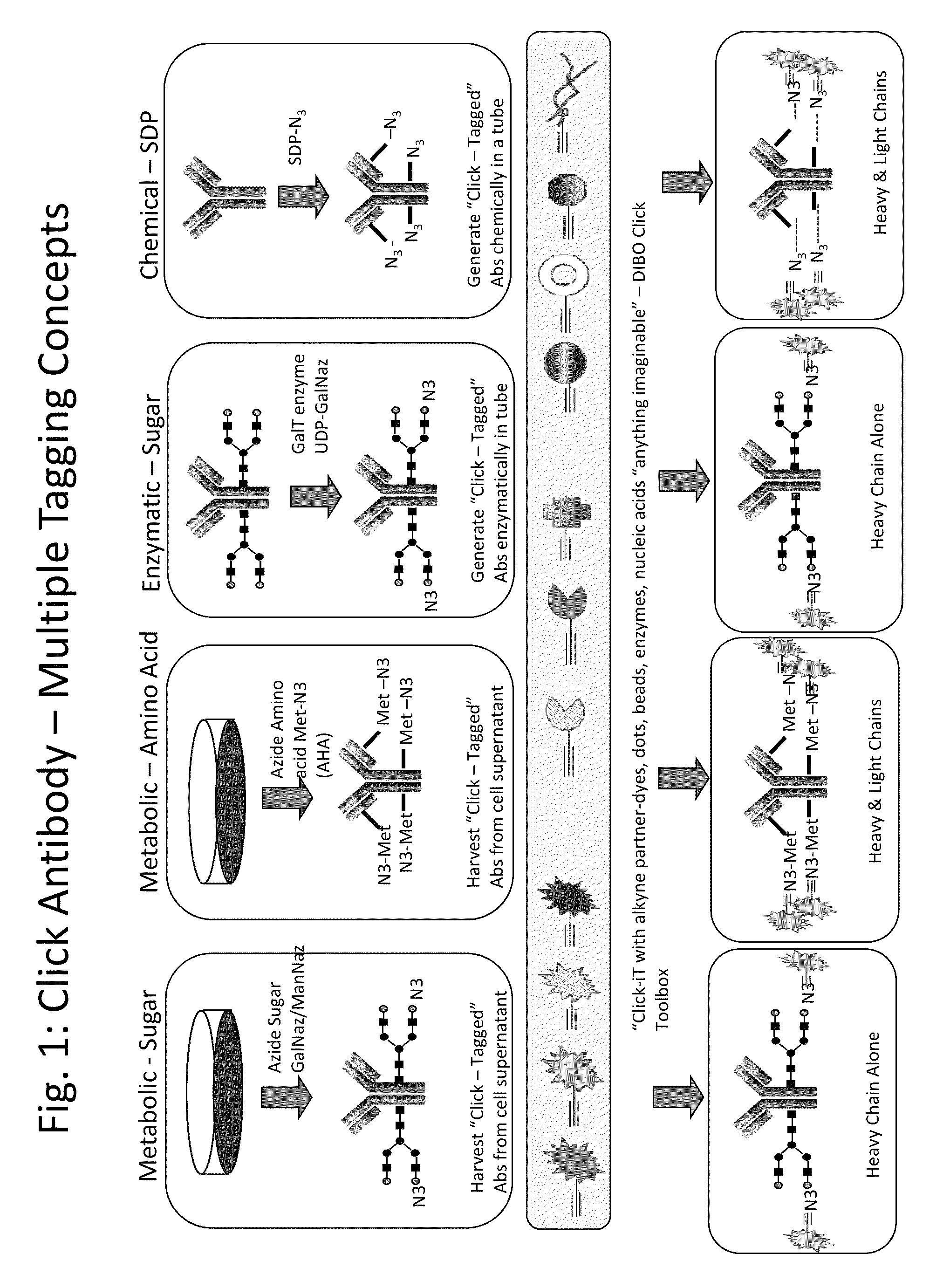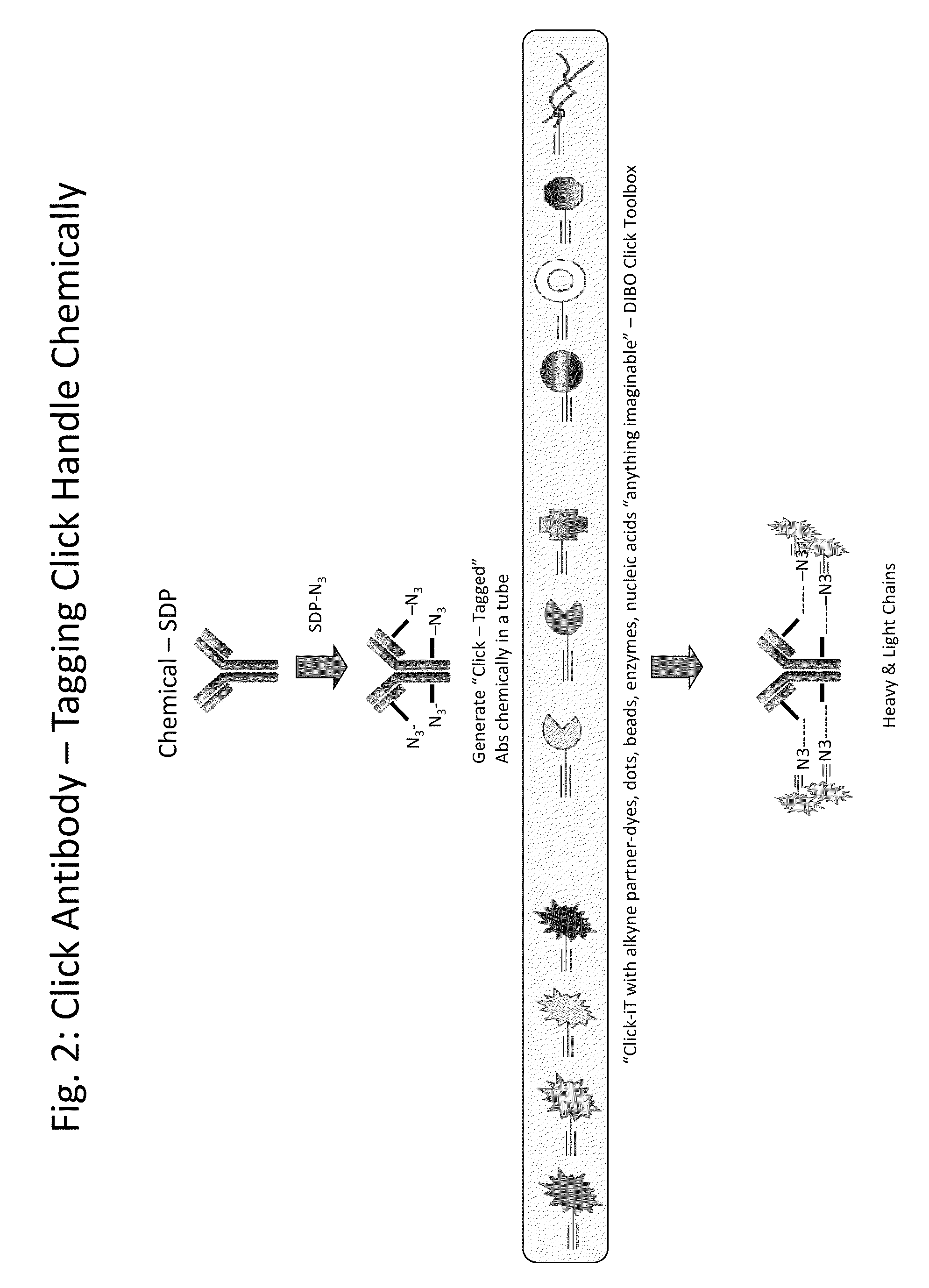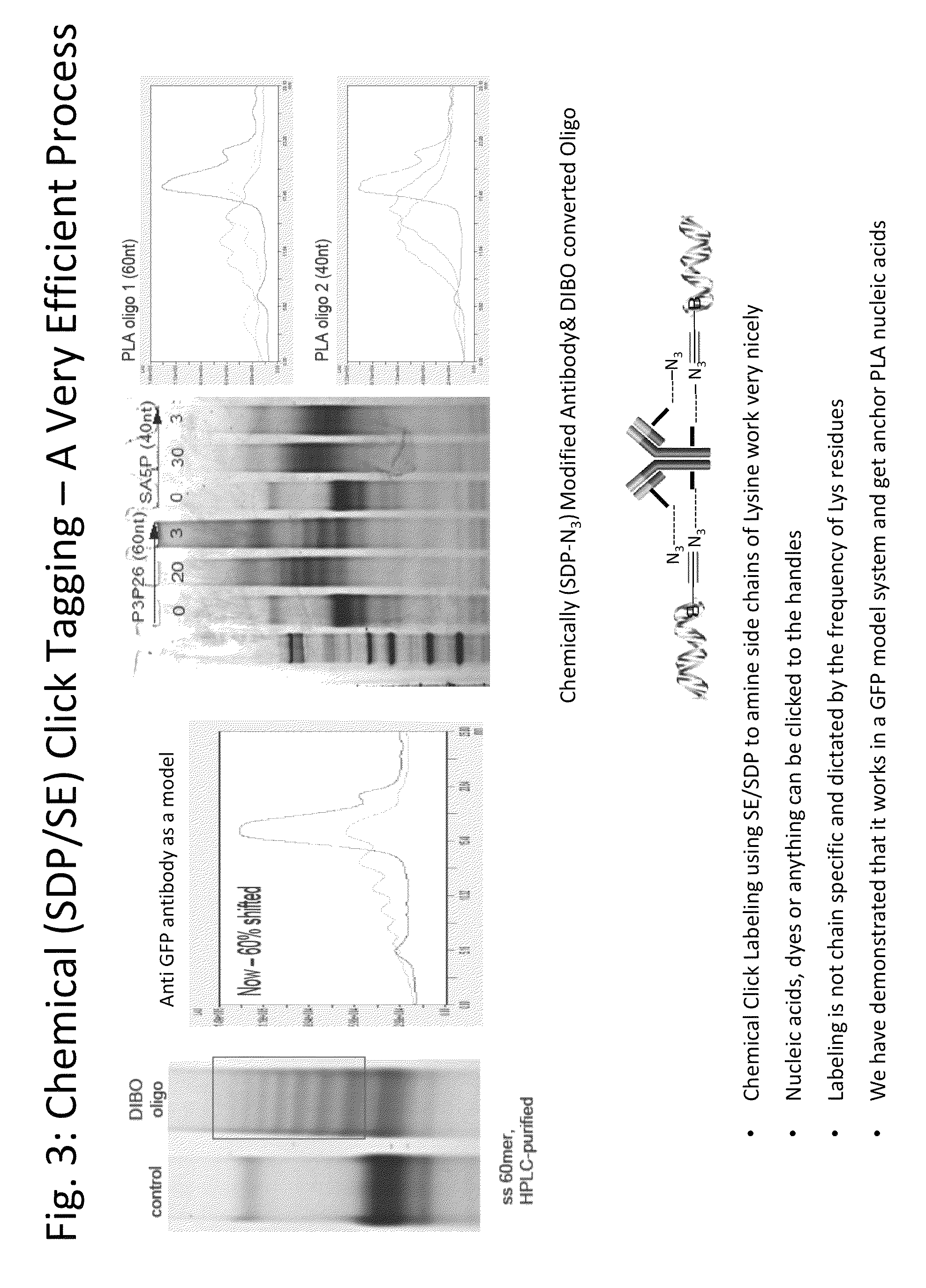SDP-containing heterobifunctional agents
a heterofunctional agent and sdp technology, applied in the field of sdpcontaining heterofunctional agents, can solve the problems of limiting the preparation, packaging, dispensing and purification conditions and their subsequent shelf life, and reagents are largely wasted, and achieve exceptional aqueous stability and great hydrolytic stability
- Summary
- Abstract
- Description
- Claims
- Application Information
AI Technical Summary
Benefits of technology
Problems solved by technology
Method used
Image
Examples
example 1
[0356]
[0357]To a solution of 1,1,3,3-tetramethylurea (2.5 mL, 21 mmol) in 10 mL of toluene was added oxalyl chloride (2.0 mL, 23 mmol) in a small portion over 2 min. period while the reaction mixture was stirred at an ice-water bath temperature. After stirring at room temperature 18 hr, the reaction mixture was concentrated to a volume of about 5 mL under reduced pressure and the resulting precipitate was collected by filtration. The collected solid was dissolved in about 20 mL of water followed by treating with a solution of potassium hexafluorophosphate (3.8 g, 21 mmol) in 50 mL of water while the mixture was stirred vigorously at room temperature to give a white precipitate. The precipitate was collected by filtration and dried under vacuum. The solid was then treated with about 8 mL of acetone and filtered to remove insoluble material. The resulting filtrate was added in a small portion into 60 mL of ether while stirring vigorously at room temperature. The desired product was co...
example 2
[0358]
[0359]To a solution of 3,5-dichloro-4-hydroxybenzenesulfonic acid (2.9 g, 8.2 mmol) in 35 mL of acetonitrile was added [chloro(dimethylamino)methylene]dimethylammonium hexafluorophosphate (3.2 g, 11 mmol). It was then added triethylamine (3.4 mL, 25 mmol) in a small portion over 5 min. while the mixture was stirred at an ice-water bath temperature. After stirring for 30 min, the resulting precipitate was filtered and the filter cake was washed with about 10 mL of acetonitrile. The combined filtrate was concentrated under reduced pressure to give a crude product. The crude product was purified by column chromatography on silica gel (eluant, H2O:CH3CN, 2:98 to 7:97) to give 2.6 g (53%) of the desired product as a white solid. TLC: Rf=0.41 (silica gel, 15% H2O in CH3CN).
example 3
[0360]
[0361]To a solution of 5,6-dihydro-11,12-didehydro-dibenzo[a,e]cycloocten-5-ol (1.6 g, 7.3 mmol, Boons et. al. Angew. Chem. Int Ed. 47, 2253-2255, 2008) in 30 mL of dry THF was added sodium hydride (60% dispersed in mineral oil, 1.1 g, 28 mmol) in a small portion over 5 min period while the reaction mixture was stirred at room temperature. After stirring for 30 min. ethyl bromoacetate (2.0 mL, 18 mmol) was added in one portion and the whole reaction mixture was stirred at room temperature under N2 atmosphere for 5 hr. To the reaction mixture was added 20 mL of an aqueous solution of 1 M NaOH slowly over 5 min. period while stirring at room temperature. It was then added 20 mL of methanol and the reaction mixture was stirred at 50° C. for 3 hrs. After the reaction mixture was cooled down to room temperature, 20 mL of water was added. The pH of the reaction mixture was adjusted to pH 3 by the addition of 10 mL aqueous solution of 3 M HCl in a small portion over 5 min. period whi...
PUM
| Property | Measurement | Unit |
|---|---|---|
| vol. % | aaaaa | aaaaa |
| pH | aaaaa | aaaaa |
| pH | aaaaa | aaaaa |
Abstract
Description
Claims
Application Information
 Login to View More
Login to View More - R&D
- Intellectual Property
- Life Sciences
- Materials
- Tech Scout
- Unparalleled Data Quality
- Higher Quality Content
- 60% Fewer Hallucinations
Browse by: Latest US Patents, China's latest patents, Technical Efficacy Thesaurus, Application Domain, Technology Topic, Popular Technical Reports.
© 2025 PatSnap. All rights reserved.Legal|Privacy policy|Modern Slavery Act Transparency Statement|Sitemap|About US| Contact US: help@patsnap.com



